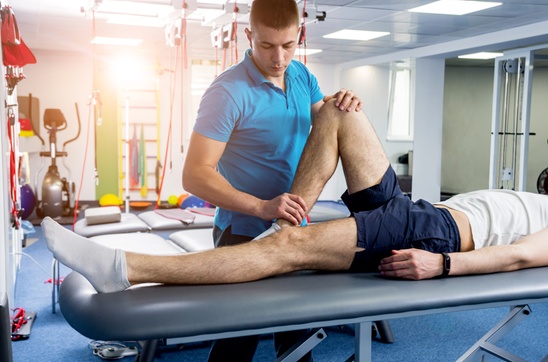Advancements in surgical techniques have significantly improved the outcomes of sports injury surgeries in several key ways:
1. Minimally Invasive Surgery (MIS)
- Reduced Recovery Time: Minimally invasive techniques, such as arthroscopy, use smaller incisions compared to traditional open surgeries. This results in less tissue damage, which accelerates the healing process and reduces recovery time.
- Lower Risk of Infection: Smaller incisions mean a lower risk of infections and other complications.
- Less Pain and Scarring: Patients experience less postoperative pain and minimal scarring, which can enhance the overall recovery experience and cosmetic outcome.
2. Enhanced Precision with Technology
- Robotic-Assisted Surgery: Robotic systems allow for greater precision and control during surgery. This can improve the accuracy of procedures such as ligament reconstructions or cartilage repairs, leading to better functional outcomes.
- Imaging and Navigation: Advanced imaging techniques like 3D MRI and CT scans, coupled with computer-assisted navigation systems, help surgeons plan and execute surgeries with greater accuracy. This is particularly beneficial in complex joint surgeries.
3. Improved Surgical Techniques and Materials
- Biologic Augmentation: The use of biologics, such as platelet-rich plasma (PRP) and stem cells, can enhance healing and tissue regeneration. These biologics are often used to augment repairs of tendons, ligaments, and cartilage.
- Better Sutures and Implants: Modern sutures and implants, made from bioresorbable materials, provide better support and integration into the body. These materials can minimize the need for future surgeries to remove hardware.
4. Rehabilitation Protocols
- Early Mobilization: Advances in surgical techniques often allow for early mobilization post-surgery, which is crucial in sports medicine. Early movement can help maintain muscle strength and joint flexibility, leading to quicker and more effective rehabilitation.
- Personalized Rehab Programs: With precise surgical outcomes, rehabilitation can be tailored to the individual, focusing on specific areas that need strengthening or flexibility work. This personalized approach enhances recovery.
5. Specific Case Examples
- ACL Reconstruction: Techniques like the use of autografts or allografts for anterior cruciate ligament (ACL) reconstruction have improved outcomes. These methods ensure a more natural restoration of knee stability and function, which is critical for athletes.
- Rotator Cuff Repair: Advances in arthroscopic rotator cuff repair techniques have led to higher success rates and lower re-tear rates, allowing athletes to regain shoulder strength and mobility more effectively.
- Meniscus Repair: Modern suture techniques and biological augmentation can improve healing rates for meniscal repairs, preserving more of the meniscus and enhancing knee function.
6. Postoperative Monitoring and Telemedicine
- Wearable Technology: Devices that monitor movement and load can provide data to optimize postoperative rehabilitation.
- Telemedicine: Remote consultations and monitoring can ensure continuous follow-up care, helping patients adhere to rehabilitation protocols and promptly addressing any issues that arise.
Conclusion
Overall, advancements in surgical techniques have dramatically improved the outcomes of sports injury surgeries by making procedures less invasive, more precise, and more effective in promoting faster and more complete recoveries. These improvements have enabled athletes to return to their sports with better functional outcomes and reduced risk of reinjury.





Comments